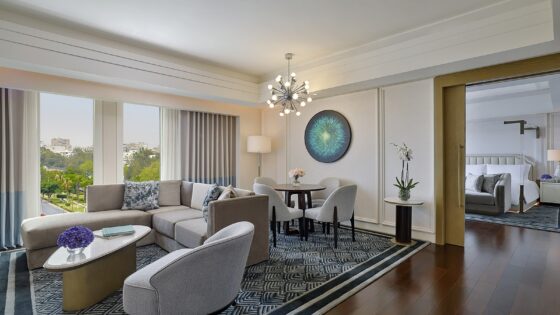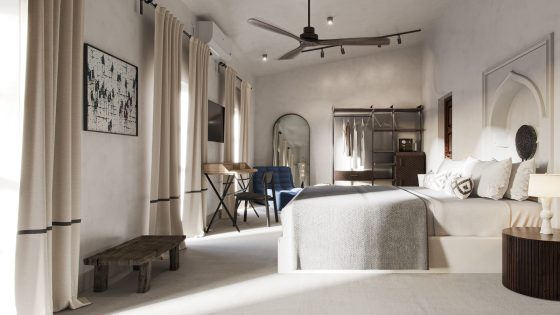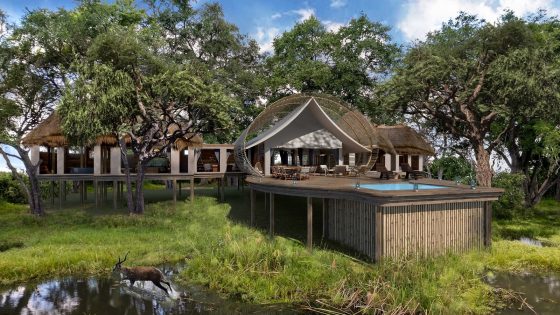Last time I rode a luxury train it was the Orient Express UK end, steam pulled from London to Kidderminster, and not the blue of Mallard or Sir Nigel Gresley either. Intended to be a celebration for designers of some good years when planned, the Lawson-induced crash turned it into a wake — grown men crying as they realised the Tory party had bankrupted them in the search for parity with the new Euro, much as many grown men cried in 2010 as they realised bankers had shafted them in this latest crash.
The decision to take the African equivalent of the Orient Express, was one haunted by my 1992 ghosts, but the Blue Train provided an effective exorcist. The train runs a regular luxurious service between Pretoria and Cape Town, timetabled as 27 hours. It harks back to a more graceful era of travel, and is all the better for that.
Relaxed journeys are for those who enjoy travelling as much as arriving, essential here as much of the line is single track. Delays are almost inevitable as we waited for mile long freight trains full of South African minerals to trundle past on the sections of loop track where this was possible. The train describes itself as a window into the soul of Africa, and it does a pretty good job of giving a privileged window into South Africa as it travels the 1000 miles through informal settlements, townships, small towns and farming communities, through a wide variety of land and townscapes.
We started in Tshwane, the administrative capital of South Africa that used to be better known as the capital of Afrikanerdom under the name Pretoria. Surprisingly the Voortrekker monument to the brutal Dutch pioneers still stands high on its dominating hill above the city. Almost a suburb of Johannesburg now, Tshwane is a busy city dominated by the civil servants that run government and the Blue Train starts its journey in the main station, still labelled Pretoria, amongst the busy commuter trains, including the new high speed ‘Gautrain’, standard Metro trains and dedicated Metro Business expresses.
Standing on its own dedicated platform the Blue Train waits the passengers who check in to their own comfortable lounge, where the crew serve welcome drinks and are introduced to their charges. When all guests are assembled they are called off by suite number, baggage loaded in the baggage car and mealtime preferences registered.

The superb dining car can seat half the train at a time, and early brunch can be chosen along with the early dinner, but the guests first have time to settle into the marvellous cabins before they start to eat. Entrance onto the train itself is a piece of theatre and the wood panelled and brass railed corridors barely prepare the guest for the richness of the design of the classical interiors, full of gleaming brass and glowing timber marquetry.
I have stayed in some pod hotels, and some so called 5-star hotels with tiny bedrooms that cannot compare with the luxury achieved in these railway carriages. My cabin had a comfortable lounge with a huge picture window and its own gold tapped en-suite marble bathroom. The choices of cabin include a special provision for the less able and larger luxury cabins with more floor space. Twin or doubles, bath or shower complete the choice. Unlike most hotels the choice is offered on booking, too. Would that hotels that offer shower only bathrooms gave the guest the choice of shower or bath on booking — giving them the choice of going elsewhere if shower only is not acceptable. Research has shown that shower only is unacceptable to over 30% of all guests and less acceptable still to the wealthy older cohort. That they have the choice on a train is a delight.

Unlike many hotels the train is able to offer a smoking lounge, up front, behind the engines, but this is the only area of the train where smoking is permitted — and the Chinese tourists took advantage of it, booking the closest cabins. The restaurant car was in the centre of the train, and immediately behind it was another, non-smoking saloon bar. After more cabins the last carriage was an observation car offering 360o views of the landscape traversed.
The advantage of train over plane or auto is of course the size of the windows. In the cabin each passenger could enjoy the view in comfort, many passengers locking open the carriage doors too, so that they could see clearly out of both side of the train. Riding gently in air-conditioned comfort in complete privacy enabled conversation about the passing views, face to face or side by side, interrupted only by the occasional service from the cabin butler or the call to eat and drink in the comfortable restaurant or bar car. Yet it was possible to go out and walk the train, to stretch and converse with other passengers, to be social in a way not possible in a plane or auto.
The gentle ride at a stately 55kph carried the rhythmic clunk over rail joints. Missing in rail traffic in Europe where tracks are welded rather than jointed, the rhythm was the only sound track as travel rolled the landscapes past gently. Many passengers had cameras permanently ready, and the television in each cabin, which could be used to watch videos or TV could also be tuned to an engine mounted camera to watch the track ahead.
Although the cabins were small at the evening meal the time was used to turn down and transform the cabin into a double bedroom – this functional change in effect doubling the cabin into a suite. The reverse process was achieved whilst breakfasting the following morning.

Sleeping on the train was far more comfortable than on a ship. It lacked that thumping juddering crash experienced when a ship hits a large wave, nor was it possible to hear the engines. The only sound was the rhythmic, gently soporific noise of iron on iron, the steady clunk setting a rhythm that lulled to a sleep only broken when silence came if the train stopped in one of the rail loops to allow for passing freight. Insulation was very good, so no sound from outside the cabin apart from the wheels on the rails, and the tv could be used to watch movies or, if one preferred, the view from the front of the train.
The restaurant car , beautifully appointed with marquetry and murals, brass and the gleam of polish, glistened with white linen and fine china. Service matched a good five star and the fare included all the food and drink one could hold. Yet still there were the views. Occasionally the disparity between the wealth in the train and the poverty still there in some townships would become evident as a signal caused an stop where passengers looking out became like zoo exhibits as people waiting on an adjacent platform looked in, but generally a smile and wave was the response from outside to a lifted glass within.
The train showcases views of the mountains, the Klein Karoo and the veldt, and stops to provide a view of one of the world’s largest holes, the diamond mine at Kimberly. No samples alas but for those with the money and needing the gleam , there is an exclusive shop on the train where diamonds and jewellery can be bought through personal appointment.
South Africa is changing, slowly, noticeable and with increasing momentum as education (sorely neglected by the arrogant and frequently corrupt ANC leaders) and economic growth improve the lot of the majority. I think South Africa is reasonably safe for tourism – take advice before you go. There are areas I avoid, and I get good local advice, but it is a good buy for Europeans and needs your tourist money to help the rainbow nation truly flower.
The beauty of the country is showcased through the windows of this train, as are the local standards of service through the charm and courtesy of the staff. Design harks back to an age when grace and pleasure in travel were key ingredients of the experience, when comfort was more important than style alone, and when customer experience ruled over the bean counters. Using the Blue Train really does show how it can be better to travel than to arrive.
© Words and pictures by Patrick Goff. From a journey in May 2013







